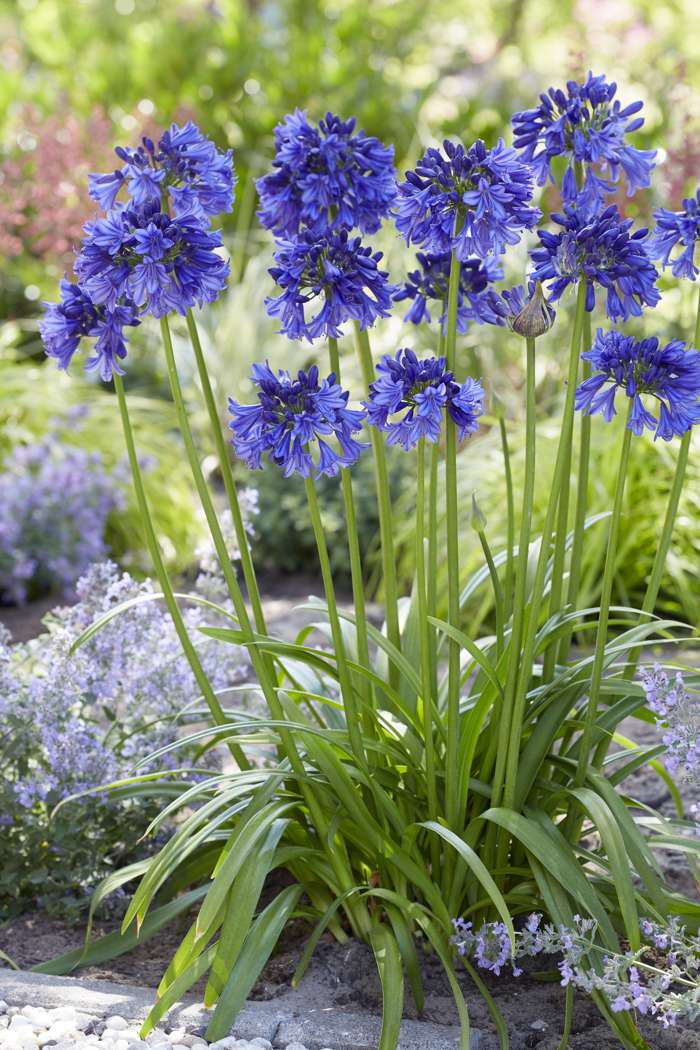Opening the Mysteries of Agapanthus: A Comprehensive Expedition of Ranges, Planting Strategies, and Maintenance Practices

Agapanthus, frequently shrouded in secret due to its varied variety of ranges and complex maintenance requirements, occurs as an enigmatic topic for many garden fanatics. With a multitude of cultivars offered, each flaunting unique attributes and development habits, comprehending the ins and outs of these plants can be both rewarding and tough. As we discover the subtleties of growing techniques and dig right into the crucial upkeep practices necessary to nurture these spectacular flowers, a globe of opportunities unravels for those looking for to master the art of cultivating agapanthus.
Agapanthus Varieties Demystified
Agapanthus ranges show a varied series of characteristics, making it important for gardeners to comprehend the distinctions between them for successful cultivation. One of the most prominent variants is the Agapanthus africanus, frequently referred to as the African Lily. This selection is treasured for its striking blue or white blossoms and its capacity to grow in both containers and yard beds. The Agapanthus praecox, or Blue Lily of the Nile, is another favored option, boasting huge spherical clusters of white or blue blossoms atop high stalks.
For those seeking an extra compact choice, the Agapanthus 'Peter Frying Pan' is a suitable selection, with its smaller sized stature and fragile blue blooms. On the other hand, the Agapanthus 'Tornado Cloud' range provides a dramatic flair with its deep purple blossoms and dark vegetation (Agapanthus). Furthermore, the Agapanthus 'Albus' stands apart for its pure white blooms, developing a sensational contrast in any yard setting
Recognizing these distinctions can help garden enthusiasts choose the most suitable Agapanthus selection for their specific needs and preferences, guaranteeing a lively and growing yard display screen.
Growing Agapanthus Like a Pro
When growing Agapanthus for optimal growth and aesthetic impact, thorough focus to dirt quality and sunshine direct exposure is vital. Choose a planting place that obtains full sunshine to partial color, as Agapanthus generally likes at the very least 6 hours of sunlight daily for robust blooming.

Necessary Upkeep Tips for Agapanthus
To guarantee the ongoing health and vigor of your Agapanthus plants, what secret maintenance methods should be focused on throughout the expanding period? Ample watering is essential, especially during the active development durations in springtime and summer season. Agapanthus plants prefer evenly moist soil yet can endure short periods of dry spell when established. Mulching around the plants can assist maintain dirt moisture and regulate temperature level. Routine fertilization is critical to advertise blooming and total plant you could check here wellness. Make use of a well balanced fertilizer with a greater phosphorus content to encourage blossom manufacturing. Deadheading invested flowers can prolong the blooming period and boost the plant's look. Agapanthus plants take advantage of department every few years to avoid congestion, enhance growing, and rejuvenate the plant. Replant the departments in well-draining soil enriched with raw material. Watch out for usual pests and illness, such as aphids or root rot, and take punctual activity to deal with any type of issues that might arise. By complying with these maintenance ideas, you can delight in healthy and balanced and vibrant Agapanthus plants throughout the expanding season.
Troubleshooting Common Agapanthus Issues
Recognizing and promptly attending to common problems that might influence the health of your Agapanthus plants is crucial for preserving their vigor and appeal. One usual problem that Agapanthus may deal with is overwatering, bring about root rot. To avoid this, make sure correct drainage in the soil and stay clear of waterlogging. Conversely, underwatering can trigger yellowing and wilting of leaves. To fight this, develop a regular watering routine, ensuring the soil is damp however not soaked. Agapanthus are additionally at risk to pests such as aphids and snails. Frequently check the plants for any kind of indicators of problem and treat them promptly with suitable techniques such as insecticidal soap or all-natural killers. In addition, poor sunshine can cause stunted development and less blossoms. Guarantee your Agapanthus obtain adequate sunlight, ideally around 6-8 hours daily. By being attentive and attending to these common issues quickly, you can help your Agapanthus flourish and thrive in your yard.
Making The Most Of Agapanthus Blooms: Expert Techniques
Enhancing the vibrancy and abundance of Agapanthus blossoms calls for a calculated strategy that harnesses optimal growing conditions and specialist methods. To take full advantage of Agapanthus blooms, begin with selecting the ideal selection for your region and wanted visual. Agapanthus ranges vary in elevation, flower color, and blossom time, so choose one that matches your garden's demands.
Plant Agapanthus in well-draining dirt with sufficient sunshine direct exposure. Routine watering, specifically during the energetic growing season, is essential to avoid stress and anxiety and encourage flowering.
Feed Agapanthus with a balanced plant food why not look here to advertise flowering. Deadheading spent flowers can reroute the plant's energy into generating new flowers (Agapanthus). Split jammed clumps every few years to renew the plant and promote growing
Last but not least, shield Agapanthus from pests and diseases that can prevent growing. Executing these specialist strategies will aid you achieve a spectacular display of Agapanthus blooms in your garden.
Final Thought
In conclusion, the mysteries of agapanthus have actually been introduced with an in-depth exploration of varieties, growing strategies, and maintenance practices. By troubleshooting usual concerns and carrying out professional techniques, one can maximize agapanthus blossoms and develop a spectacular garden view display screen.

When planting Agapanthus for ideal growth and visual influence, careful attention to soil top quality and sunlight direct exposure is paramount.To grow Agapanthus like a pro, space the plants according to their mature dimension to allow for correct air circulation and stop overcrowding. Agapanthus plants benefit from department every few years to avoid congestion, enhance flowering, and renew the plant.In final thought, the enigmas of agapanthus have been revealed via a detailed exploration of selections, growing techniques, and upkeep techniques.
Comments on “Agapanthus Breeding: Tips for Expanding Your Plant Collection”